Global Furniture Industry Highlights
2008/11/14 | By Judy LiFuture Looks Bright for Youth Segment
Despite rising fuel costs, other pricing pressures and waning consumer optimism, the future looks bright for the youth industry.
Consumer spending for youth bedroom furniture is expected to grow by 23.5% in the next five years, with sales to reach US$6.3 billion by 2012, according to Easy Analytic Software Inc. The 10 largest metro markets for youth bedroom in the United States are New York, Los Angeles, Chicago, Philadelphia, Dallas, Miami, Washington, Houston, Atlanta and Boston.

Manufacturers are more than ready to help fill those bedrooms and the product style and selection continues to evolve in youth. Here are some of the key trends:
Sophistication: Parents know that kids are becoming more sophisticated at increasingly younger ages. They're more tuned in to style and image than ever before, and in their quest for more grown-up looks in their clothes, shoes and room decor. Sophisticated designs are more refined and elegant and hit on a variety of styles from French country and modern to Asian-inspired and Art Deco.
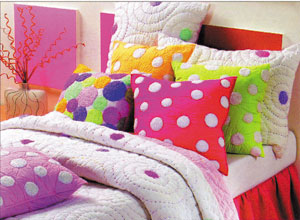
Another storage option gaining popularity is the use of bookcases flanking bookcase beds. The effect is a wall of shelving with tons of storage options in a relatively small footprint. Stacking storage is also on the rise. Manufacturers are offering storage cubes that can be configured multiple ways depending on the child's needs.
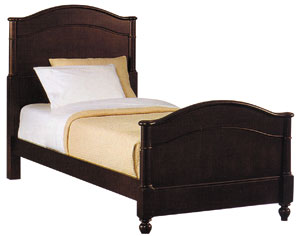
Electronics: The focus is no longer on a desk and hutch in a child's room but rather on media/gaming centers. These are evolving from the big armoires of the past to more compact SKUs as the technology of flat screens and gaming systems increasingly migrates to kid's rooms.
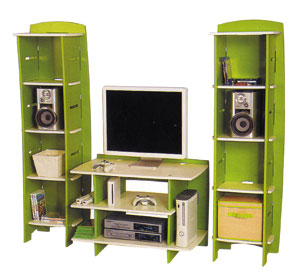
Girl power: Feminine looks are coming back. White girls groups are a mainstay in youth, but there's also a resurgence in more ornate, traditional-looking girls group. Some are being punched up slightly with pastel finishes like soft yellows and mint greens. (Excerpted from Furniture/Today issued July 14, 2008, Vol.32, No. 44)
Sleep Accessories: Coming of Age
The sleep accessories category is rapidly coming of age.
The signs of that progress are everywhere: In the findings of a new retail bedding study conducted by Furniture/Today, in the higher profile the category is enjoying in the industry, in the commitment to the category being made by major bedding retailers, and in the increasing sophistication with which retailers are approaching those products.
That progress comes just in the nick of time, as the industry struggles in a stagnant business climate to generate sales. Retailers say that maximizing every transaction has never been more important in this time of dwindling store traffic. And sleep accessories, spanning the gamut from pillows to mattress and pillow protectors, and from sheets to toppers and comforters, are tailor made to boost sales tickets, to strengthen shaky gross margins and, importantly, to give consumers a more comfortable night of sleep.
Everyone wins as consumers embrace sleep accessories, leading suppliers contend.
Sleep pillows (as opposed to decorative pillows placed on sofas and beds) remain the most popular sleep accessory in furniture and bedding stores. Two years ago, only 36% of the responding furniture retailers reported carrying sleep pillows, compared to a strong 85% of bedding specialty stores. Two years made a big difference in the pillow segment: This year, 86% of the responding furniture retailers said they have sleep pillows on the floor, essentially equaling the commitment to the category made by the bedding specialists in 2006.
Mattress pads dramatically increased their presence. Two years ago, only 36% of furniture stores said they carried that product, but this year, that figure rose to 62%. And in the bedding specialty channel, the figure jumped from 60% in 2006 to 83% this year.
Waterproof mattress protectors, which provide consumers additional benefits, are also on the upswing. While only 21% of furniture retailers reported carrying that product two years ago, the figure was up to 55% this year. And while 70% of bedding specialty retailers reported carrying waterproof mattress protectors two years ago, the figure was up to 88% this year.
The waterproof pillow protector segment also is on the ascent. While just 9% of reporting furniture retailers carried that product in 2006, the figure was up to 31% this year. The story was similar for bedding specialty retailers, where 40% of the specialists carried pillow protectors in 2006, a figure that rose to 62% this year.
The remaining sleep accessory categories-comforters, sheets and mattress toppers-also show some gains in floor placements last year, but in some cases essentially held steady.
For example, while comforters and top-of-bed products gained in the bedding specialty store segment, growing from 15% to 38%, in the number of stores carrying that category, the category held its ground among furniture stores: 27% of reporting furniture stores carried the category in 2006, while 24% did this year.
The sheet segment gained plenty of ground among the bedding specialists last year: While 50% of the reporting specialists carried sheets in 2006, the figure rose to 79% this year. Again, the future stores held steady, with 12% carrying sheets in 2006 compared to 10% who carried the product this year.
Finally, the topper category posted strong growth by bedding specialists. While 10% of the specialists carried toppers in 2006, the figure soared to 29% this year. (Excerpted from Furniture/Today issued July 21, 2008, Vol. 32, No. 45)
Ikea Maintains Top Lifestyle Specialist Spot
Lifestyle furniture stores recorded the second-highest percentage increase by channel in the furniture universe for 2007, while retaining its 13% share of the Top 25 sales revenues by channel, the same as in 2006.
Lifestyle stores on the Top 25 had a collective sales increase of 5.9% to US$3.4 billion, second only to the bedding specialty stores, which racked up a 6.4% gain.
Among the Top 5 lifestyle stores in the U.S., Ikea again was in the top spot with a sales gain of 14.6%, reflecting the opening of three U.S. megastores in 2007. Furniture and bedding sales held to roughly the same percentage of its total sales in 2007, 47.2% versus 47.8% in 2006.
Williams-Sonoma, parent company of three distinct home brands-Williams-Sonoma Home, Pottery Barn and its offshoots and the growing West Elm-held the second slot with a sales gain of 9.4%, bringing its 2007 total to US$1.04 billion.
Pottery Barn, with its offshoots PBTeen, Pottery Barn Teen and Pottery Barn Bed & Bath, is the biggest division of the company. Williams-Sonoma is more decorator oriented, while West Elm is focused on the young contemporary adult market.
Crate & Barrel's furniture and bedding sales grew 3.1% last year, to US$495 million. The company added seven stores including a CB2 in New York, the third in the company's young adult contemporary concept. Overall, Crate saw furniture and bedding sales drop to 37.6% of its total volume last year, from 40.3% in 2006.
On the losing side, Cost Plus World Market in the No. 5 position had a dramatic 22% sales decline to US$230 million in 2007, despite a net gain of 11 units in the period, bringing its total to 298.
The other loss was Pier 1, which is in the second year of a reorganization. Its 2007 furniture and bedding sales dropped 15.5% to US$496 million. Under its restructuring program, Pier 1 shed 78 units during the year, including Pier 1 Kids and the clearance centers. (Excerpted from Furniture/Today issued Aug. 25, 2008, Vol. 32, No. 50)
Color Trend for 2009
Tastes gravitate toward conventional tones
By Susan Pantaleo
Today's shoppers are sophisticated and more knowledgeable about design because of exposure to style tips on the Internet and television, but we can still catch their attention with the 2009 forecast colors.
Your customers cannot fully experience the effects of color until actually in an environment where they are skillfully applied. Such an immediate experience cannot happen over the Internet, and that is where your store has an advantage. If you can impress your customers with fresh color combinations, they will spend more time mingling with your merchandise.
The palettes for 2009 show a direct connection to social and economic issues as we see the return to tradition. Even the high-end customer who normally takes more color risks does not want their choice to be careless. The most successful approach will be to use conventional colors on big-ticket items, and pump up the design with trend colors on accent pieces and paint.
Colors that instill comfort and confidence are rising in popularity, which explains why the blue family has become increasingly important. You will see the emergence of some colors that have been on hiatus for decades. Mauve, avocado, and rust are all making a comeback. Yellow is the go-with-everything accent color of the year, and purple in all of its variations is irresistible.
In playing with the hot hues for 2009, as identified by three forecasting experts-Sherwin Williams, Benjamin Moore and Letrice Eiseman for Pantone-I selected and organized groups that you can creatively mix and match.
Keep It Calm
This is a soothing collection of pale tints with a sheer quality. Each sample commits to an actual color to make a soft, satisfying statement. Pale lilac and baby blue are the freshest looks. Blend any of these colors with white to create an open, airy space or pair with complex illusion for a sophisticated look.
Well Grounded
The importance of green goes beyond the sustainability movement and provides a needed connection to nature. This year, the green and brown earth tones are deepened by golden honey, spicy russet, and stone gray. Again, we see blue as an important addition that adds balance to design, just as it does in nature.
Secret Self
Privacy issues are high on our list of importance. There is a mood of holding something back just for you, in which the outside world only gets a glimpse of what you feel like revealing. Think of Christian Louboutin's signature red leather sole on a black pump and you will know just how to use these colors. Fuchsia is the hottest tease in the group, followed by yellow as the accent that always works.
Complex Illusion
Colors in this group are complex blends of multiple hues in dark tones. Many provide a more fashionable alternative to black. A protective cocoon is created when this type of color surrounds you. You will be challenged to identify these colors because they behave differently depending on the light and shadow. (Excerpted from Furniture /Today issued Aug. 25, 2008, Vol. 32, No. 50)
Upholstery Makers Going Green
By Gary Evans
Upholstery covered with eco-friendly fabrics is finding its way onto more and more retail floors, and is expected to be a significant factor in seating lineups as the rush to protect the earth grows larger.
The list of green upholstery sources is growing with companies whose products include everything from organic wool batting to frames made of wood from sustainable forests. But fabrics-organic, renewable and recycled-are the first feature that draws the interest of the environmentally conscious.
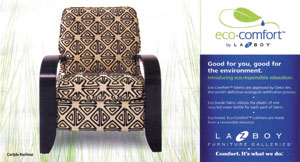
She cited he growing popularity of organic groceries, which include products that range from fresh produce to organic alphabet pasta for kids. And every brand is pushing green in a not-to-be-ignored drumbeat.
Jennifer McConnell, director of design for Pearson Co., said the upper-end upholstery source offers an abundance of green materials, including organic and natural fabrics.
Pearson is seeing growing sales in green on its contract side, but not quite as much action in residential. "I think it's a really nice option to offer it to clients so they can have it both ways" she said. "We're going to see more and more of it, and we want to be ahead of the curve."
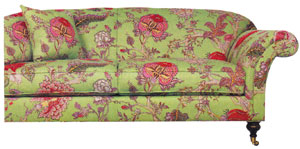
Hoyas said it's no problem to get green fabrics from the mills. "They have a nice variety out there. This market was better than last market for selecting and I think it's only going to get better."
Precedent, a division of Sherrill, tracks sales weekly in its e-collection and "every week it becomes a greater and greater percentage of our overall sales," said CEO Woody Williams. "That's what tells me (the green movement) is gaining traction."
At retail, salespeople need to present green products as an option, and also must be able to tell consumers what makes them different, he said. "I think the green consumer is mindful that there is a lot of 'green washing' going on. Unless you can back up your claim, I'm not sure consumers are totally convinced that what they're buying is really green."
While a number of companies, particularly in the middle to upper end, have been offering green options for the last two or three years. Rowe sees the movement to eco-friendly products as "very important" and now has 147 natural fiber fabrics in its Eco Rowe line. "We have always had natural fabrics in our line because we recognized the importance of offering this product," said Stefanie Lucas, president and CEO. "Consumer interest has increased, so we have increased our offerings."
Retailers also are embracing the appeal that these products have with customers, said Lucas. "We are encouraging our retailers to incorporate more eco-friendly environment in their stores." (Excerpted from Furniture /Today issued Sept. 1, 2008, Vol. 33, No. 1)
Gong Green is the Next Luxury
By Susan Pantaleo
The old image of an environmentalist as an eccentric tree-hugger is being replaced by the growing awareness of mainstream Americans who are practicing the eco-friendly lifestyle.
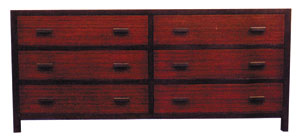
The current dreary economy has actually contributed to the growth of the green movement. Conspicuous consumption is wasteful and society as a whole is becoming bored with the disposable attitude. If our industry can provide good furniture and design choices that are sustainable, it gives consumers a reason to spend a little more now as an investment in the future.
This philosophy is being adopted by companies in the furniture industry. Now that green is gaining momentum, the standards set by the Sustainable Furnishings Council are being implemented and companies are turning their attention to style.
"My goal is to help proliferate a philosophy that beautiful design and sustainable design can and should be mutually inclusive," said EcoLuxury furniture designer Maria Yee. "While using environmentally sensitive materials is incredibly important, to create truly luxurious, sustainable furnishings the focus must encompass the entire manufacturing process. Only then will the total carbon footprint be minimized."
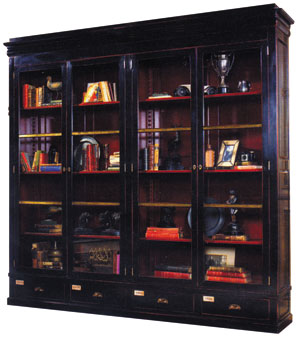
Internet Shopping Continues to Rise
These days, almost three fourths of American adults use the Internet, based on research done by the prestigious Pew Internet & American Life Project. According to the latest Pew Internet survey:
--Four fifths of adult online users have used the Internet to do research about a product they are thinking about buying, with 20% doing this on the typical day.
--Two-thirds of adult online users have purchased a product online, such as books, music, or clothing, with 6% saying they do this on the typical day.
Kids are shopping online, too. According to a survey of 8 to 14 year-olds by Ringwood, N.J.-based Stars for Kidz, a firm specializing in researching kids, 77% of kids in that age group have not only shopped on the Internet, but have also made an online purchase.
Between 2000 and 2007, online sales have increased by 361% while all retail sales have increased by only 35%. Still, online sales accounted for only 3.2% of all retail sales in 2007, according to the latest Department of Commerce figures. That's an impressive climb from the 0.9% accounted for in 2000, however.
American Internet users have embraced online shopping because they say it is convenient and a time-saver. That's the conclusion of the most recent survey of online shopping habits conducted by the Pew researchers.
--78% of Internet users either agree or agree strongly with the proposition that shopping online is convenient for them.
--68% of Internet users either agree or agree strongly with the notion that online shopping saves them time.
According to the Pew research, most Internet users are confident online information will get them where they wants to go in their online shopping. The latest Pew Internet survey indicates that eight of 10 Internet users believe they will make the right purchasing decision as they gather information online in advance of buying something. Just more than half said they were eager to share what they have found online.
That's good news for the 83% of kids retailers that have a Web site and suggests they may want to beef up their online presence. Especially because more than half of kids consumers look to the Internet for ideas about decorating their kids' rooms, with three fifths of them going to retailer sites, according to the Kids Today/HGTV exclusive Consumer Views survey conducted earlier this year.
Among the things the Pew survey says retailers may want to address is a lack of information or confusing information some consumers say they encounter. The Pew research revealed four of 10 consumers were frustrated by the lack of information or the inability to find information online and three in 10 were confused by the information they did find online. Neither will win friends or customers for a store.
One of the things kids consumers look for as they are gathering ideas on decorating their kids' rooms are reviews by other consumers.
A recent survey of consumers by Chicago-based eTailing Group indicates customer reviews foster decision-making in all stages of the shopping process where eight of 10 shoppers use customer reviews to decide between two to three products or to confirm that their final selection is the right one. According to this survey, two out of five consumers actually start the shopping process using reviews, while one in five start reading reviews after their budget is established. (Excerpted from Kids Today issued Sept. 2008)
British Furniture Exports-Embracing the Global Economy Together
British furniture exports in 2007 totaled over £1.2 bn and figures for the first six months of this year indicate that this figure is set to grow further still in 2008. British Furniture Manufacturer's (BFM) association, which has been promoting exports and supporting British companies overseas for many years, is looking to grow that figure with a number of new initiatives.
The global economy presents opportunities as well as the much publicized challenges. Indeed, while economic conditions are fairly consistent throughout the whole of the UK, markets around the world, like India, China, the UAE and Eastern Europe are experiencing never-before-seen growth, wealth and development. With this comes incredible opportunity for British furniture manufacturers.
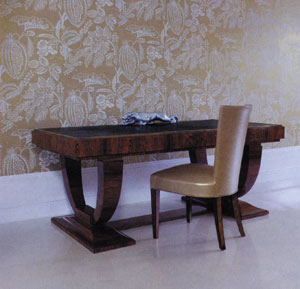
BFM recently revisited the study and carried out further up-to-date analysis to confirm the current situation. Since the study, exports have increased, but Mason is convinced there is a larger share to be gained.
He says: "We interviewed over 1,000 furniture buyers from all over the world in an effort to gauge a perception of UK furniture manufacturers and their products-strengths and weaknesses etc. The most common reasons for not buying UK furniture were a lack of knowledge and awareness of products, and a lack of effective communication with UK furniture manufacturers, for example, poor marketing. What is encouraging is that this can be overcome so easily with a clearly defined and implemented export marketing strategy."
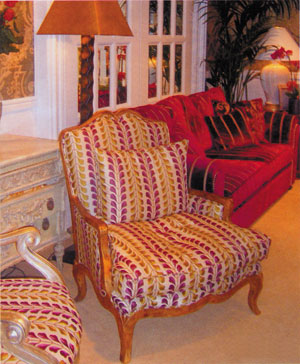
In the survey, few overseas retailers reported dissatisfaction or disinterest in British furniture in terms of design, quality, etc. On the contrary, these elements were highlighted as strong positives. The major objections by manufacturers taking part in the study were factors such as lack of resource, lack of knowledge, lack of government support, and currency issues.
All of the evidence seems to demand a coherent, collective strategy of pooling knowledge, resource, expertise and experience.
Mason says: "This is the same conclusion we drew from the projects. We currently offer export support in terms of administering government funding for exhibitors at overseas shows, and sourcing space for UK companies at international trade fairs. We also hold considerable data and information including market reports and buyers' databases for certain markets. The network of contacts that we have around the world has also helped companies enter or develop export markets. We are confident, however, that we can do more and that we need to be the catalyst in the creation of this coherent, collective strategy."
Mason adds: "With the collective expertise and knowledge of BFM and its member companies, we are confident that we can put together a system that encourages British furniture manufacturers to look again at exporting, supports them through the process of entering new markets or developing existing ones, and increases that £1.2 bn figure year on year."
With the creation of the Great British Furniture campaign here in the UK, BFM is now embarking on telling the story of the British furniture industry to a much wider audience. The 2005 study was titled "Export Culture"; it seems now is the time for a cultural shock. (Excerpted from the United Kingdom's Cabinet Maker issued Sept. 5, 2008)
Flying Again
Combining furniture and air travel, American company Motoart has found an unusual way of transforming aircraft parts, engines and weapons into furniture.
Products include desks made from a Boeing 747 jumbo jet engine, a Boeing 707 jet aircraft wheel table, a room divider crated from a Boeing 707 jet airliner fuselage section, and an American B52 bomber ejection seat-deactivated of course.
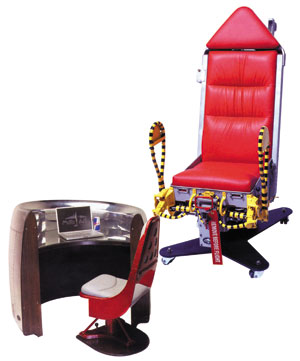
The company sources material globally; since 9/11, the US Government's laws about decommissioned parts means that old military aircraft are scrapped, so any fighter, bomber or US cargo plane that is used by Motoart will be pulled from a pre-9/11 selection.
Motoart began in 1998 and has designed nearly one hundred different styles of recycled functional art, which can be seen in showrooms around the world, including Switzerland, America and China. (Excerpted from the United Kingdom's Cabinet Maker issued Sept. 5, 2008)
Profits to be Made in the Soft Furnishings Industry
The UK soft furnishings industry shows excellent signs of profitability, despite dramatic differences in sales growth between companies, says an in-depth report into the sector.
Larger companies are in general showing more growth than smaller ones, with over all sales increasing by 0.6%, says the latest Plimsoll Analysis. But when it comes to pre-tax profits, the smaller businesses are outperforming the rest.
The figures show that the industry's market size decreased, although more than half of the 833 companies analyzed actually increased their sales.
"The difference in sales growth between individual companies in this industry is dramatic," says the report. "The total market size decreased by 3.1% last year. Estimates place this total market size at $4.08 billion British pounds, down from $4.21 billion last year.
"Almost half of the companies analyzed recorded a fall in sales, with an average fall of 13%. Over half of the companies recorded an increase in sales, with an average increase of 11%."
The report says that in general the larger companies are growing at 3.4%, compared to the smaller companies who are declining by 1.2%. But the smaller companies are outperforming their larger counterparts in other areas-the average gross profit margin of a smaller company is 42.7%, compared to the larger companies' average of 31.7%.
"In the past 10 years, gross margins have remained fairly level. Yet, remarkable, the gap in the levels of gross margins has also remained steady. Essentially, this means that the gross earnings at a typical company in this industry have remained largely unchanged in the last 10 years. Some companies have been working to improve this however," says the report.
"Currently, at an average company in the industry, gross profit margins represent 37.8% of sales. Despite this, 21% of companies recorded a gross profit margin over 50%. Over half the companies increased the actual £ value of their gross profits in their latest year of accounts."
The figures show that 23% of companies reported a pre-tax loss.
"Ignoring these loss-makers, the industry average pre-tax profit margin moved from 3.2% to 5.5%," says the report. "There is excellent profitability in the industry." (Excerpted from the United Kingdom's Cabinet Maker issued Sept. 19, 2008)




